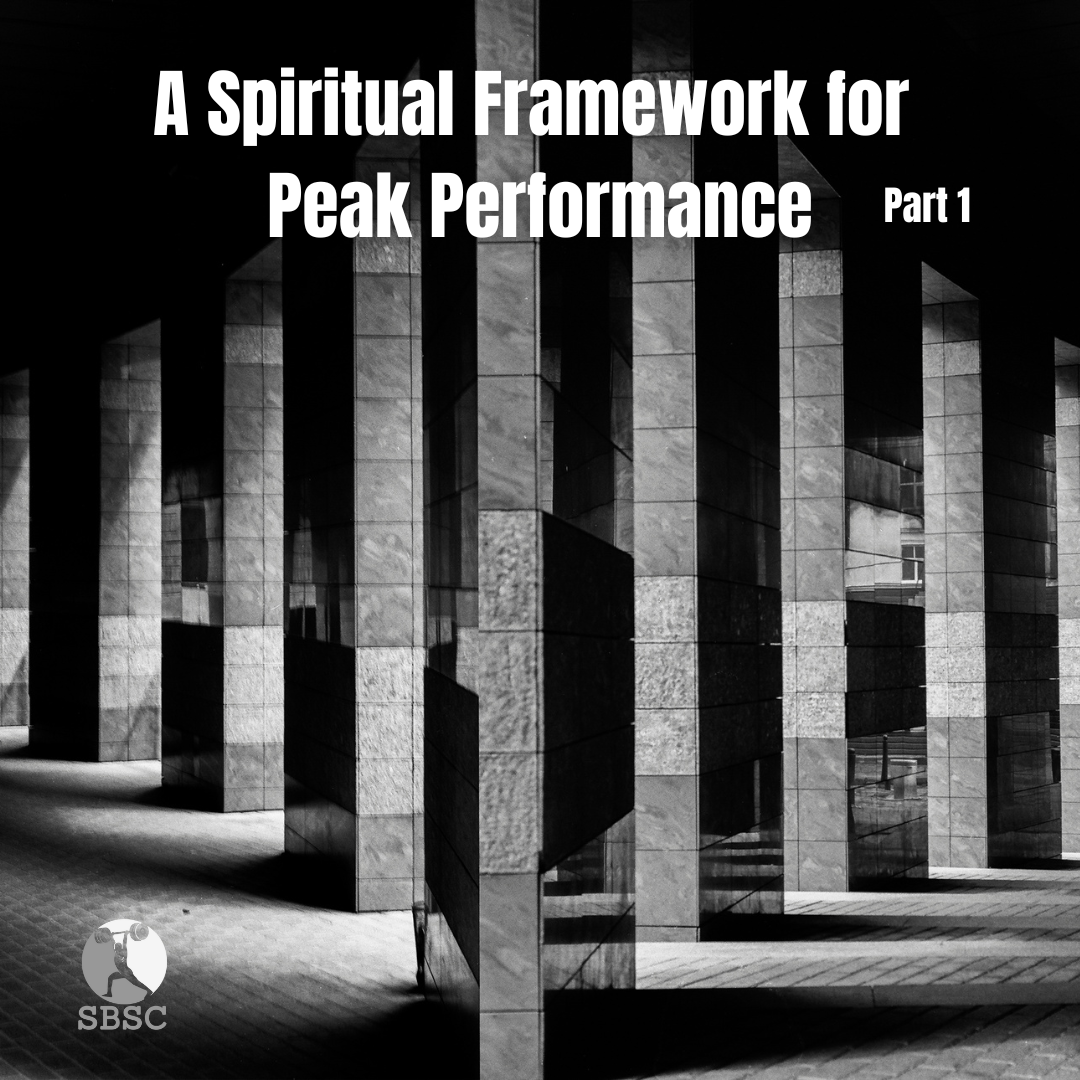Footwear for Strength Training: A Guide for Athletes and Coaches
When it comes to strength training, athletes should focus on technique, programming, and intensity without overlooking one critical factor - footwear. While it might seem like a minor detail, the shoes you wear during strength training can make a significant difference in your performance, stability, and long-term health.
For student-athletes, proper footwear is even more important because they are still developing their physical foundation. Poor shoe choices can lead to imbalances, improper movement patterns, or even injuries that can affect performance in their primary sport. Whether you’re performing squats, deadlifts, Olympic lifts, or dynamic strength movements, the right shoe provides the support, stability, and feedback your body needs to move efficiently and safely.
Why the Right Shoe Matters
Stability is Everything
Strength training requires a stable base. Every time you perform a lift - whether it’s a squat, deadlift, or clean and jerk - you’re transferring force from your feet through your entire body. If your feet are unstable, your entire movement chain is compromised. Shoes that provide a flat, firm base help anchor you to the ground, improving your ability to generate force and maintain proper form. Running shoes, with their cushioned soles designed for forward motion, tend to absorb force rather than direct it. This reduces stability and can hinder performance.
Somatic Feedback Enhances Control
Somatic feedback, or the ability to sense your body’s position through contact with the ground, is crucial for balance and control in strength training. When lifting weights, your feet need to “feel” the ground to make the small adjustments that keep you balanced. Shoes that are overly cushioned or loose-fitting - like Crocs or Hey Dudes - interfere with this feedback, making it harder to control your movements. A good strength training shoe enhances somatic feedback, allowing your body to communicate more effectively with the ground, which results in better form and more stable lifting.
Injury Prevention Through Proper Support
One of the most important reasons to wear the right shoes for strength training is injury prevention. Shoes designed for strength training provide the necessary support and structure to protect your feet, ankles, knees, and hips during heavy lifts. For example, weightlifting shoes with a raised heel can help athletes with limited ankle mobility achieve a deeper squat while maintaining proper alignment. Conversely, wearing shoes that are too soft or unstable can lead to excessive foot movement, increasing the risk of ankle sprains, knee injuries, and poor lifting form, which puts strain on the lower back.
Foot Protection and Safety
Strength training often involves heavy weights, whether you’re using free weights or resistance machines. Wearing shoes that cover and secure your entire foot ensures protection from dropped weights, slips, or falls. Casual footwear like Crocs or slip-ons may leave parts of your foot exposed and are prone to slipping, which poses a safety risk in the gym. A strong, well-constructed shoe will give you the confidence to train safely without worrying about potential accidents.
Optimized Performance
Finally, the right shoe can enhance overall performance. Shoes tailored to the specific demands of strength training allow you to push harder and lift more. For example, weightlifting shoes with a raised heel and secure strap system provide a more stable foundation for Olympic lifts, enabling athletes to focus on explosive movement without worrying about balance or foot placement. Similarly, minimalist shoes allow advanced lifters to feel closer to the ground and maximize their control during movements like deadlifts, where balance and direct contact with the floor are crucial.
Footwear Categories and Their Purpose
Not all shoes are created equal. Choosing the right footwear can significantly impact performance and safety, especially for student-athletes who are still developing their skills and strength. Below are the primary categories of footwear commonly seen in the gym, along with their intended purpose, key features, and ideal use cases.
Running Shoes (e.g., Nike Air Zoom Pegasus, Adidas Ultraboost, Brooks Ghost)
Purpose: Designed primarily for forward motion and shock absorption during running.
Key Features:
- Soft, cushioned soles to absorb impact.
- Flexible upper to accommodate foot movement during running.
Why They’re Not Ideal for Lifting: The cushioning that benefits runners can reduce stability during strength training, making it harder to balance and maintain proper form, especially during heavy lifts like squats and deadlifts.
Weightlifting Shoes (e.g., Nike Romaleos, Adidas Adipower, Reebok Legacy Lifter)
Purpose: Built specifically for Olympic weightlifting and heavy squats, these shoes help lifters maintain stability and proper posture during explosive lifts.
Key Features:
- Raised heel to assist with ankle mobility and squat depth.
- Rigid, flat sole for stability and maximum power transfer from foot to floor.
- Straps or laces to secure the foot in place during heavy lifts.
Best For: Athletes focusing on squats, clean and jerk, or snatch movements. The raised heel helps athletes achieve better positioning and lift heavier weights safely.
Minimalist Shoes (e.g., Vibram FiveFingers, Merrell Vapor Glove, New Balance Minimus)
Purpose: Designed to simulate barefoot movement while providing a thin layer of protection. Minimalist shoes prioritize proprioception, or the body’s ability to sense movement and position.
Key Features:
- Flat, thin sole for maximum ground contact and feedback.
- Minimal cushioning to allow the feet to work naturally.
- Lightweight, often with a flexible material that allows for natural foot movement.
Best For: Athletes looking to strengthen their feet, improve balance, or perform movements that require stability, like deadlifts. Minimalist shoes are great for more experienced lifters but might not provide enough support for beginners or those with foot issues.
Cross-Trainers (e.g., Nike Metcon, Reebok Nano, Under Armour TriBase Reign)
Purpose: Versatile shoes designed for multiple activities, from weightlifting to cardio and agility exercises.
Key Features:
- Moderate cushioning for impact during dynamic movements.
- Flexible sole to support multidirectional movement.
- Lightweight with additional reinforcements for durability.
Best For: Athletes who mix strength training with other forms of exercise, such as plyometrics or high-intensity interval training (HIIT).
Flat Sole Shoes (e.g., Converse Chuck Taylors, Vans Old Skool, Nobull Trainer)
While not designed specifically for lifting, flat-sole shoes like Converse Chuck Taylors have become popular among lifters because they provide a firm, stable base for lifting.
Key Features:
- Flat sole with minimal cushioning.
- Durable upper for foot stability.
Best For: Lifts that require a stable platform, such as deadlifts and squats. Flat-sole shoes allow for better ground contact and stability, helping lifters maintain balance.
Casual Footwear (e.g., Crocs, Hey Dudes, Birkenstock Boston)
Purpose: Casual shoes designed for comfort and everyday wear, not athletic performance.
Key Features:
- Soft, loose fit with little support.
- Cushioned soles for comfort rather than stability.
Why They’re Not Suitable for Lifting: These shoes offer little stability or foot containment, making them unsafe for strength training. The loose structure increases the risk of injury, especially during dynamic or heavy movements.
Barefoot Training or Socks
Purpose: Some athletes opt to train barefoot or in socks to maximize somatic feedback, which helps with balance and control.
Key Features:
- Maximum ground contact and proprioception.
- No cushioning or external support.
Best For: Light or bodyweight strength training. However, for heavy lifts or in environments where protection is necessary, proper footwear is recommended.
How to Choose the Right Shoe for Strength Training
Now that we’ve broken down the categories of footwear, how can you or your athletes choose the right shoe for strength training? Here are some tips...
Prioritize Stability and Ground Contact: Look for shoes that offer a flat, firm sole with minimal cushioning. This enhances somatic feedback and helps with balance, particularly during compound movements like squats and deadlifts.
Consider Your Foot Shape and Support Needs: If you have a wider foot or need extra support due to flat feet or high arches, make sure the shoe fits snugly without being too tight or restrictive.
Evaluate the Type of Lifting You’re Doing: Olympic weightlifting may require shoes with a raised heel, while deadlifts are better performed in flat-soled shoes or minimalist options.
Test Them Out in Action: Always try shoes on with your workout gear and test them with a few basic lifts to see how stable and secure they feel. Are you able to plant your feet firmly? Does the shoe stay secure during the movement?
Don’t Be Swayed by Price Alone: Price isn’t always the best indicator of a shoe’s effectiveness. Focus on the features that support your training needs rather than the brand name or cost.
Final Thoughts...
By understanding the importance of footwear and the different types, you can make better decisions about what’s right for your training. My recommendation is simple: prioritize stability, support, and connection with the ground when choosing your shoes. Whether you’re coaching athletes or training yourself, the right shoe can make a noticeable difference.
If you’re doing a lot of squats, deadlifts, or Olympic lifts, look for a shoe that gives you a solid, flat base or has a raised heel if you need help with mobility. If you want to feel the ground and focus on your balance, minimalist shoes or flat-sole shoes are a great option. Avoid running shoes, Crocs, or casual footwear - they won’t give you the support and safety you need in the gym.
Remember, this choice doesn’t have to break the bank. Focus on the features that matter most: stability, safety, and somatic feedback. If your shoes give you a solid connection to the floor and keep you stable during lifts, you’re already ahead of the game.
Dedicated to your success,
Sam



